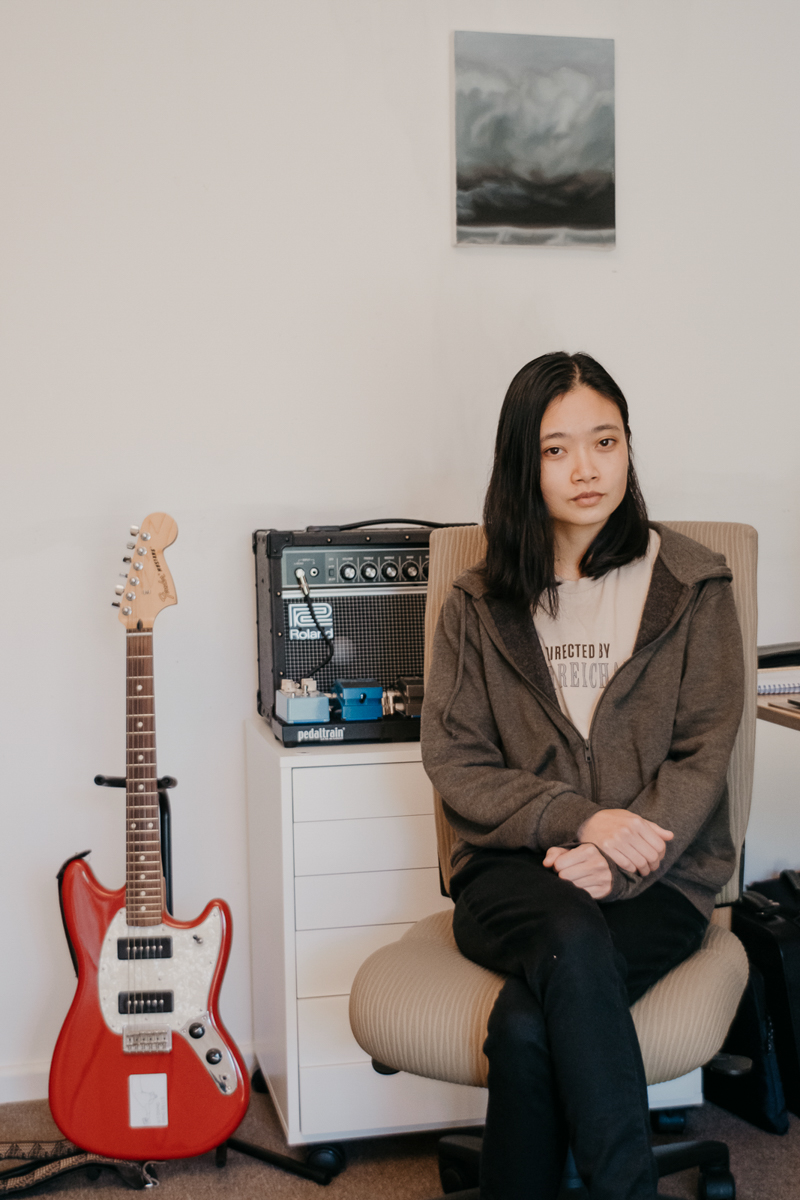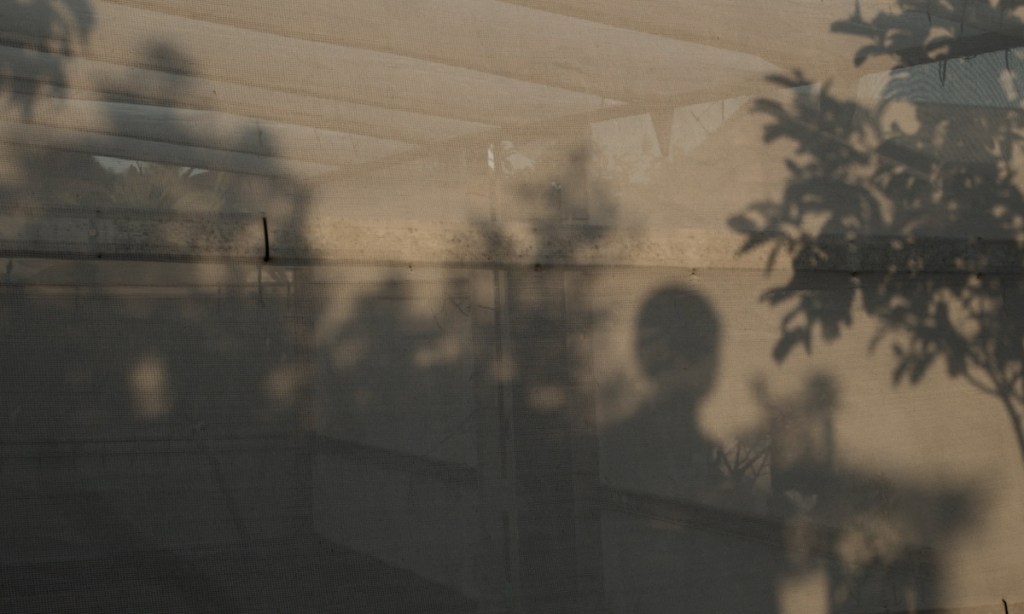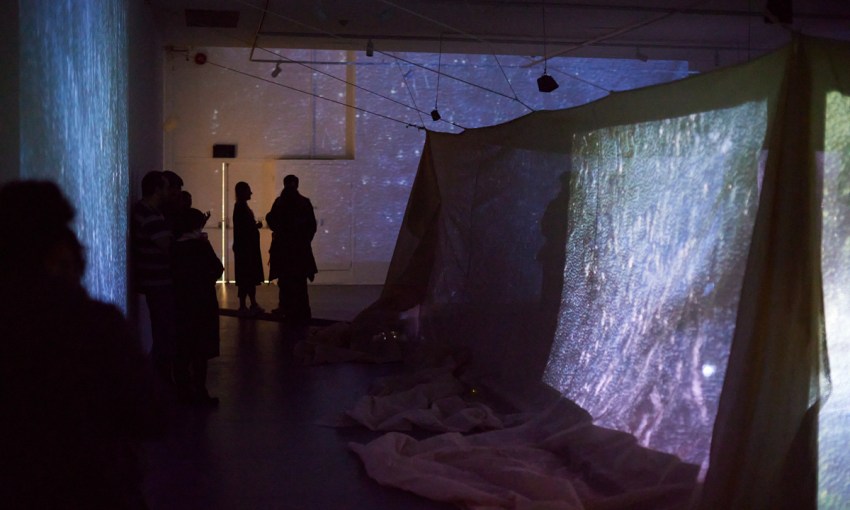Internationally acclaimed filmmaker and artist Allison Chhorn has opened her landmark installation Skin Shade Night Day at ACE, inviting audiences to be immersed in an evocative and sensory melding of past and present.
Trauma and family bonds in ACE’s Porter Street Commission
In the middle of the gallery at ACE stands a shade house. Almost nine metres long and constructed from not-quite-blush coloured opaque cloth – the same material seen on countless similar structures around Australia – it appears incongruous.
But as audiences step over the threshold the shade house envelops them. In each corner, elements of a video cycle are projected – their light bleeding out into the gallery. Atmospheric sounds rise up from different positions around space. Inside the shade house, suddenly, we are taken to another place.
Skin Shade Night Day is showing at ACE from 4 June—13 August.
The exhibition is accompanied by public programs that include an artist talk and film screenings curated by Allison.
“[Audiences] will be transported into a different season,” says Allison Chhorn, who created the installation Skin Shade Night Day after being awarded ACE’s 2022 Porter Street Commission. “Just hearing the sounds of the cicadas might bring them to a fond memory, or something like that.”
Memory is a key theme in Allison’s work. The Cambodian-Australian artist – whose films have screened at festivals in New York, Korea, Switzerland and Brazil – has developed a rich and nuanced aesthetic through which she explores the echoes of her family’s traumatic experiences living under the Khmer Rouge.
For Skin Shade Night Day, Allison collaborated with her parents. She filmed the three of them undertaking everyday tasks like cooking and gardening – documenting the connection fostered through the sharing of physical reality.

Filmmaker and artist Allison Chhorn
“As a young child, you want to copy your parents – to experience what they’re doing,” Allison says. “I feel like I’ve been doing that a little more consciously by doing the gardening the same way as they are and re-performing their rituals in order to record the sound.
“It’s a very physical way of understanding them. One example is when my Mum prepares the land with a hoe… She told me that her brother injured himself with one during the Khmer Rouge, and so that’s something that I’ve always been thinking about when I use that tool.”
Allison unpacks these ideas of connection, everyday rituals, sense of place and the sometimes haunting spectre of the past through a unique visual and sonic language. The art blends internal and external worlds and reaches the audience through sensory, rather than didactic, means.
Prior to the Porter Street Commission, Allison’s work was largely made for cinema screens. The $20,000 investment has enabled her to expand her artistic language into the physical realm.
It’s a shift that signals a landmark moment in the artist’s career and an evolution of her practice – both in its outcomes and in her methods of creating.
“I think, most importantly, it’s given me an opportunity to work with new collaborators and family in in a different way,” says Allison. “My dad built the original shade house, and my collaborators and mum worked on the version that’ll be installed in the gallery. I’m working with family and friends in very direct and intimate ways.”

A still from the video component of ‘Skin Shade Night Day’
The inaugural 2021 Porter Street Commission recipient, Bridget Currie, is now touring her commissioned exhibition, Message from the meadow, to Penrith Regional Gallery. ACE Artistic Director Patrice Sharkey says the program is deliberately designed to have this kind of amplification effect.
“It’s about the investment in new work that can circulate, have other lives, go into other contexts and create new opportunities for artists that are based [in South Australia],” she says.
Allison’s desire to shift from screen to gallery made her a natural candidate, which is also focussed on enabling artists to tackle an ambitious step in their career.
“The idea of Allison wanting to build film, and her film language, back into the gallery and understand how to turn her screen-based practice into a multi-dimensional installation is really exciting,” says Patrice. “And because she had been working in the context of film and film festivals, she is perhaps not the most visible artist in the gallery sector.
“The Porter Street Commission call out is also a mechanism for ACE to invest in visual artists that perhaps haven’t been on our radar, creating an opportunity for them based upon the quality of their work.”
For about six weeks between June and August at ACE, Allison’s work will be gloriously visible. It’s an opportunity for the artist, but also for audiences – who, as they step into the gallery, will be entering into an intimate and affecting conversation with the artist, the past, the present, and with themselves.




